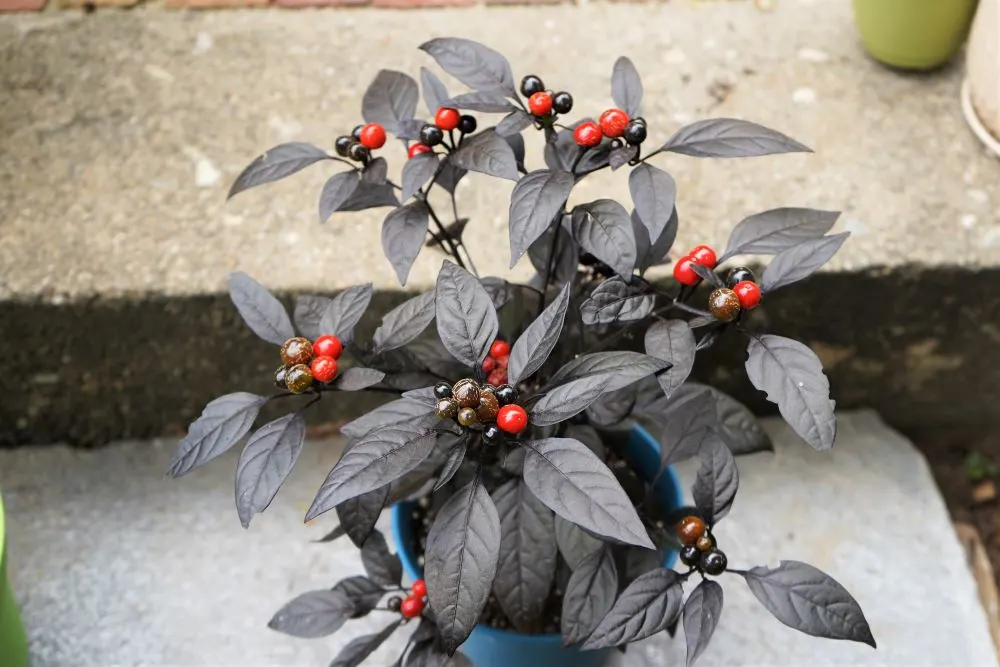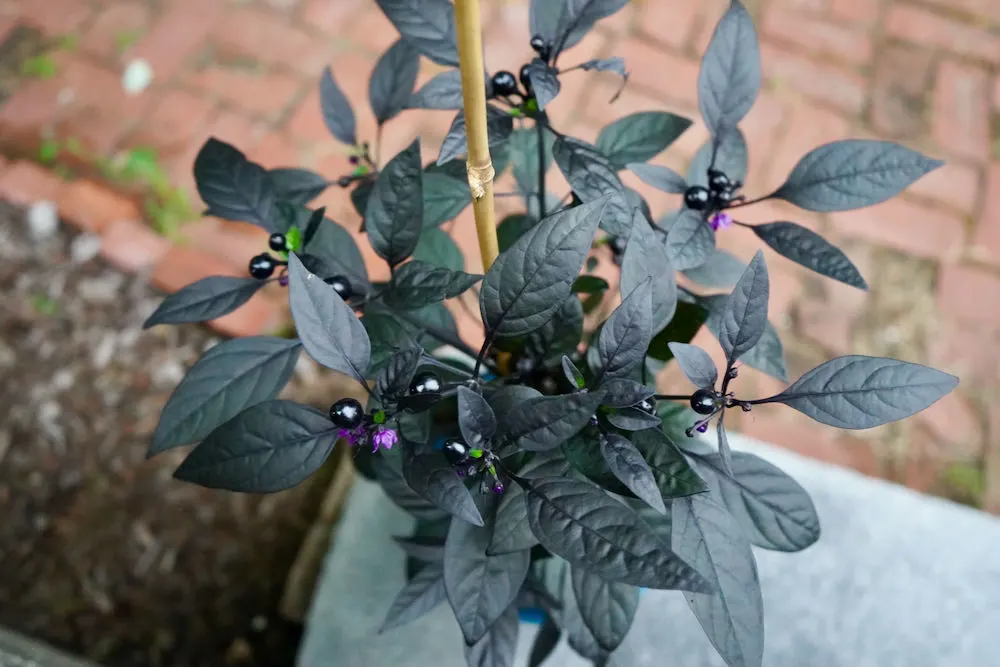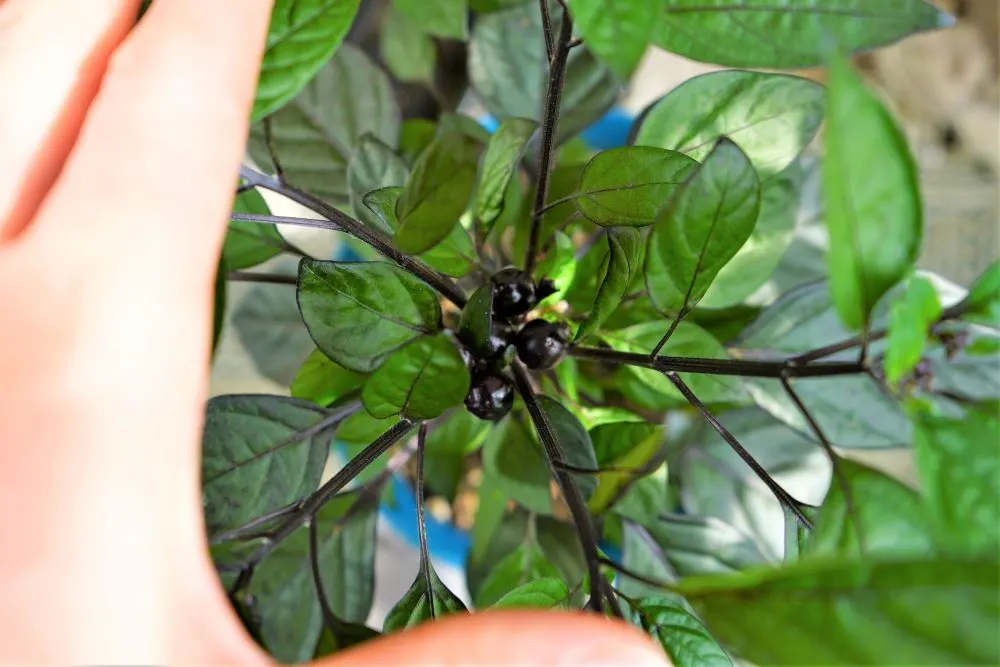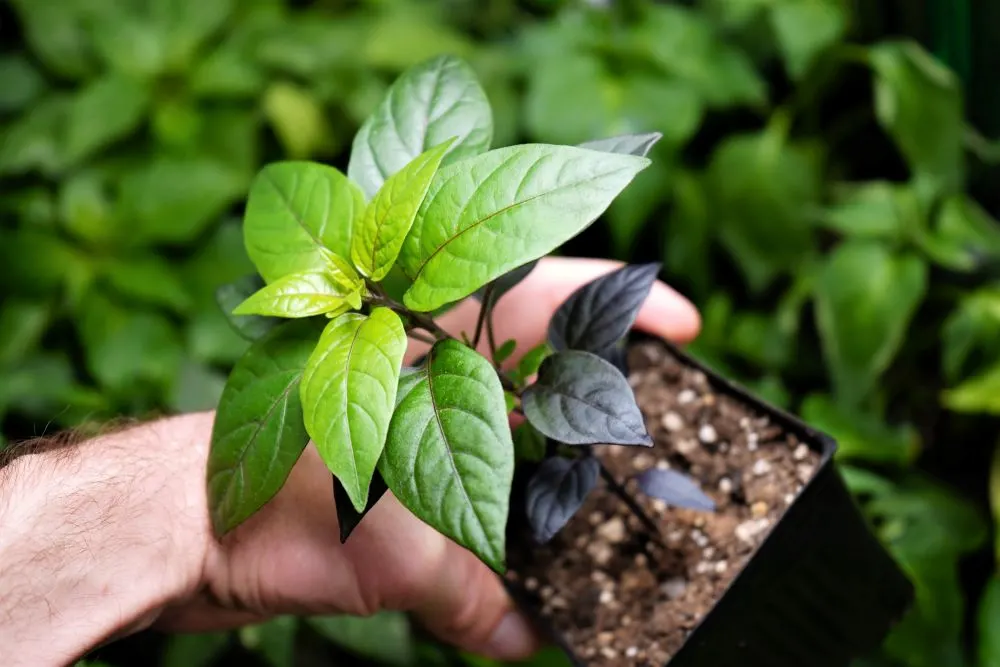Chili peppers come in almost every shape, size, and color you can think of. From the orange and red striped varieties, to completely black varieties, you can basically find everything.
Among the many varieties grown for ornamental purposes is the black pearl pepper. These gorgeous plants have dark foliage and dark peppers that ripen from deep purple to red.

Black Pearl Pepper Plant Characteristics
While most are grown for eating, ornamental pepper varieties are typically grown as attractive edging plants in landscaping or flower beds. This is because the varieties are bred specifically for aesthetic purposes.
The black pearl pepper plant comes from the Capsicum annuum species of chilies. Plants tend to grow relatively small (1-2 feet tall), and produce clusters of small, berry-shaped fruits (~1/2 inch diameter). This makes the plant quite unpractical for food purposes, but it sure does look nice!
The leaves have a dark, nearly black sheen unlike almost any other pepper variety we have grown. The more sun they receive, the darker the foliage will be. Black pearl received an AAS award in 2006 for its incredible traits.
The fruits themselves are also a deep black color, and eventually turn red when fully ripe. The dark color is thanks to the presence of anthocyanin or the ‘purple pigment,’ which is activated by light exposure. There are many other purple peppers that share this trait.

The flowers are a rich and vibrant purple color, putting on a show before the peppers even arrive. The dark colors of the black pearl plant offer great contrast when planted nearby brighter flowers or foliage.
- Are black pearl peppers edible? Although black pearl peppers are considered ornamental, the peppers are edible (and quite spicy). The flavor is similar to a red bell pepper, but with a strong kick of heat.
- How spicy is the black pearl pepper? Though many will grow these plants simply for looks, they can be used to spice up food. The heat is similar to a cayenne pepper, around 30,000 SHUs on the Scoville scale.

Growing Black Pearl Peppers
Thankfully, growing your own black pearl peppers is easy. The plants naturally branch out, forming more and more clusters of purple and red pods throughout the summer.
The plants are easy to maintain, requiring no pruning or staking. They are also very heat and drought tolerant, requiring little effort during the season.

Plant black pearl peppers in partial shade to full sun. The more sun the plant receives, the darker the foliage and peppers will be.
Plants take 100 days or longer to produce fully mature peppers, but will provide visual appeal from start to finish. I recommend planting the black pearl in a large container with other plants, such as flowers or other pepper varieties.

More pepper varieties:

